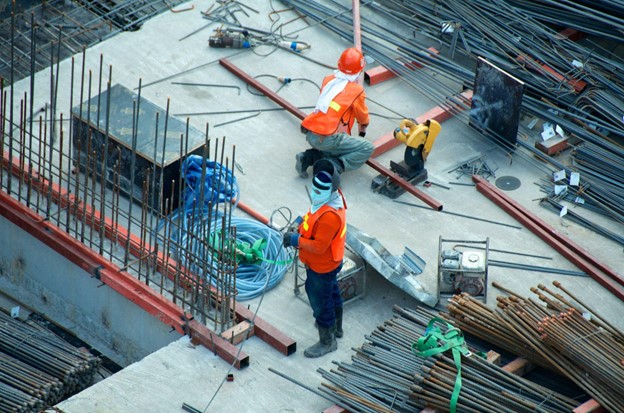
Image Source: Unsplash
The construction industry, pivotal to the global economy, is undergoing transformative shifts. Challenges such as technological lags, regulatory complexities, and workforce diversity are being addressed through innovative approaches and policy changes. As technology becomes more integrated into construction practices, it catalyzes efficiency, safety, and sustainability.
The future of construction looks towards automation and advanced robotics, promising substantial advancements in construction processes. Colleen Calandra describes how professionals in the field must adapt to these changes, leveraging new technologies and practices to maintain competitiveness and drive the industry forward.
Current State and Challenges in the Construction Industry
The construction industry has always been a cornerstone of reflecting the health of a nation’s economy and its growth prospects. Despite its critical role, the sector faces a myriad of challenges that can stifle progress and innovation. Among these are barriers related to the difficulty of site conditions and the limitations of current construction technologies. Additionally, socioeconomic factors such as labor shortages and funding constraints play a significant role in shaping industry dynamics.
Technological limitations also present major hurdles. While other industries have adopted new technologies, construction has been slower to embrace digital changes. This lag not only affects efficiency but also impacts the ability to attract young, tech-savvy professionals to the field, further exacerbating workforce issues.
Regulatory and legal issues add another layer of complexity, with rigorous standards and safety protocols necessary to navigate. These regulations, while crucial for safety and quality, often delay project timelines and increase costs, posing another barrier to the seamless execution of construction projects. The accumulative effect of these obstacles calls for a concerted effort to identify innovative solutions and strategies that can drive the industry forward, making it more adaptable and resilient in the face of these persistent challenges.
Barriers and Case Studies
Navigating through the maze of regulatory and legal challenges is a common theme in construction, where compliance with standards can dictate the pace and direction of a project. Notably, a large-scale construction project recently managed to overcome obstacles through meticulous planning and proactive engagement with regulatory bodies, ensuring all requirements were seamlessly integrated from the design phase through to completion.
In contrast, a small-scale construction business highlighted the adaptability and innovation smaller entities can bring to the table. By focusing on niche markets and leveraging local regulatory knowledge, the business was able to turn potential legal hurdles into opportunities for growth. Their success underscores the potential for smaller-scale operations to excel within a tightly regulated industry.
Technological and Policy Changes
The infusion of advanced technologies such as artificial intelligence and virtual reality into construction processes is revolutionizing how projects are planned, executed, and monitored. These technologies enhance precision, improve safety, and reduce waste, addressing both economic and environmental concerns.
The adoption of AI in project management, for example, has streamlined operations, enabling real-time decision-making that keeps projects on track and within budget. Simultaneously, policy shifts are pivotal in shaping the construction landscape. Government incentives aimed at promoting sustainable practices have encouraged companies to adopt greener methods and materials.
Diversity and Inclusion
The construction industry is recognizing the value of diversity and inclusion within its workforce. By welcoming a broader range of perspectives, companies are finding innovative solutions to age-old challenges. A notable shift has been observed in how projects are managed and executed when diverse teams are involved, leading to enhanced problem-solving capabilities and increased worker satisfaction.
The Future of Construction
As we look toward the future, the construction industry is poised to undergo significant changes driven by emerging technologies. The potential integration of advanced robotics and machine learning systems suggests a shift towards more automated and precise construction techniques. These developments promise to increase safety and efficiency while reducing human error and the physical strain on workers. The industry’s trajectory is geared towards embracing these innovations, which are expected to redefine traditional construction practices.
Practical Insights for Construction Professionals
Professionals within the industry are encouraged to stay up-to-date on the latest trends and technologies. Embracing new learning opportunities and adapting is vital for staying competitive in a changing industry. Moreover, practical strategies such as investing in technology training for employees and engaging in partnerships with tech firms can provide noteworthy advantages.







